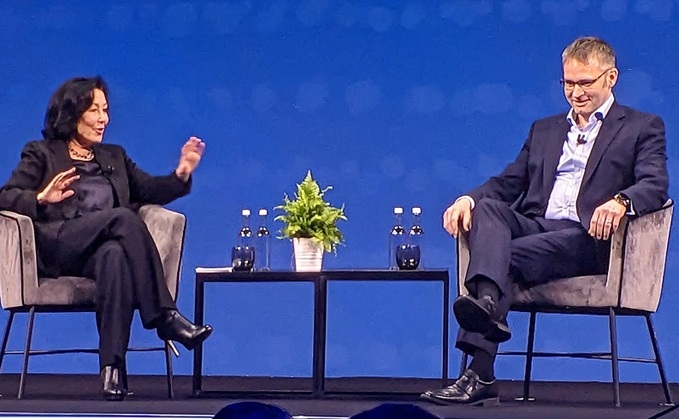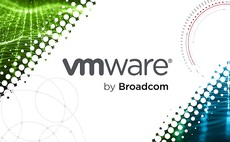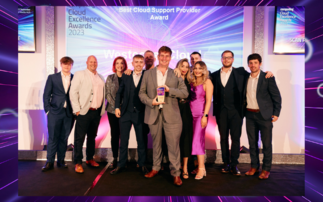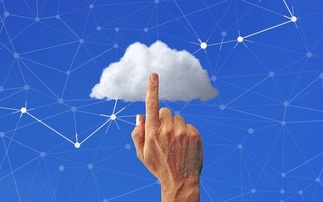
Oracle SEO Safra Catz and Network Rail's Simon Goodman on stage at CloudWorld Tour London 2023. Image: Tom Allen / Computing
Oracle CEO Safra Catz was clearly thrilled to be back at a physical event as she greeted attendees at CloudWorld Tour London yesterday.
"We're back!" she shouted as she walked the (long) distance from stage steps to centre, waving to the partners and customers who had come out to hear about Oracle's latest cloud developments.
Catz wasted no time in getting the audience on-side (not that we'd expect much dissent at a partner event, anyway). Oracle, she said, is really just the underlying platform: the true success is theirs.
"We only shine when you shine, we shine in reflected glory... A little part of me just lights up thinking we are a little piece of your success."
This was a repeated theme of the day, with customers frequently joining Oracle speakers on stage to discuss their own work.
The keynote set the precedent, with four different customers sitting down with Catz in less than an hour.
"Gone are the days where you just have siloes"

First was Nicole Clayton, global chief digital officer at Nespresso - proving that any company can use data for meaningful change.
Nespresso has been focused on democratising data for several years, and Clayton said the days of siloes are "gone." The company is looking at how to use data to build better experiences for everyone in the organisation.
That also applies outside the firm. Nespresso is using behavioural and sensorial analytics to build recommendations, helping customers find their perfect cup of coffee.
Clayton said the company had even changed strategy because of new data (although not how many times, or how frequently).
"You might have a very clear vision of where you want to go, and maybe the data is telling you something different. All of a sudden you have to shift gears and really pivot."
In such a data-driven environment, agility and flexibility are key for success; or, in other words, "[You have to] really be able to turn on a dime."
"A once in a lifetime opportunity"

Next on stage was Simon Goodman, Group CIO of Network Rail. Much like Oracle, Network Rail - which owns and manages the physical infrastructure of the British rail network - is an underlying platform, although one with plenty of legacy - it's involved in a 200-year-old industry, after all.
Network Rail has been an Oracle customer for more than 20 years, and has long had a traditional way of building and maintaining products - but "as we become more data driven, the opportunities for innovation to transform railway experience have been fabulous."
That couldn't have happened without moving traditional "deep legacy" systems from on-premise to the cloud, said Goodman, which has unlocked agility, speed and scalability - and safety. The company has invested heavily in predictive maintenance, using IoT sensors to understand wear and tear across the rail estate.
In the past engineers would have had to visually inspect tracks on a schedule. The passenger was often the first to know about a problem, because it would affect their journey. Goodman called this a "fix and fail" mentality.
Now Network Rail is dropping fix and fail in favour of "predict and prevent," which is only possible by understanding the state of rail infrastructure in near real time.
"That serves two things: One is it allows us to get out there and fix the fault before it really impacts passengers, but it also means that because we can target our maintenance colleagues out there to specific points, they're actually spending less time in a fairly harsh and dangerous environment.
"So that's just a really simple example of how data is actually helping us transform maintenance activities."
Network Rail continues to expand its use of data at the backend, too. One example is train timetables, which it has to draw up using "an army" of people working with rail operators. In the future - maybe as little as three years away - that could be done using AI.
"It's a really interesting time for Great Britain and railways. We're on the cusp of a transformation we haven't seen in 30 years, as we bring track and train closer together. A once in a lifetime opportunity to transform our industry and passenger experience. Data and digital are totally interlocked into that forward strategy."






















